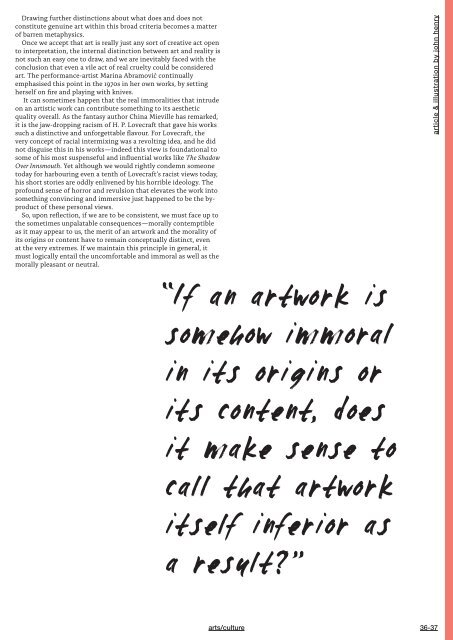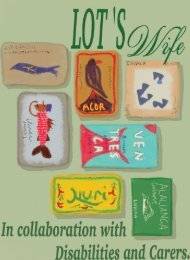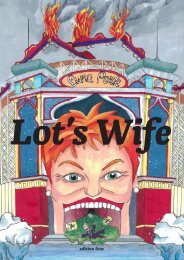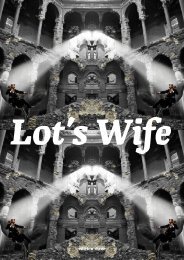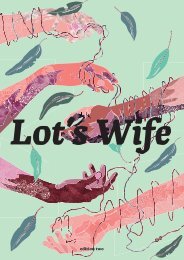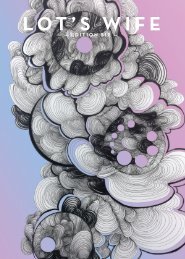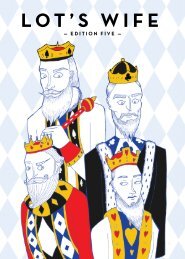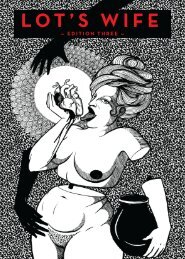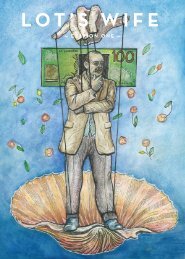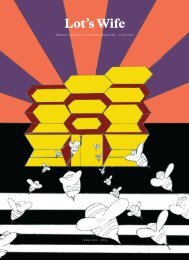Lot's Wife Edition 1 2017
Create successful ePaper yourself
Turn your PDF publications into a flip-book with our unique Google optimized e-Paper software.
Drawing further distinctions about what does and does not<br />
constitute genuine art within this broad criteria becomes a matter<br />
of barren metaphysics.<br />
Once we accept that art is really just any sort of creative act open<br />
to interpretation, the internal distinction between art and reality is<br />
not such an easy one to draw, and we are inevitably faced with the<br />
conclusion that even a vile act of real cruelty could be considered<br />
art. The performance-artist Marina Abramović continually<br />
emphasised this point in the 1970s in her own works, by setting<br />
herself on fire and playing with knives.<br />
It can sometimes happen that the real immoralities that intrude<br />
on an artistic work can contribute something to its aesthetic<br />
quality overall. As the fantasy author China Mieville has remarked,<br />
it is the jaw-dropping racism of H. P. Lovecraft that gave his works<br />
such a distinctive and unforgettable flavour. For Lovecraft, the<br />
very concept of racial intermixing was a revolting idea, and he did<br />
not disguise this in his works—indeed this view is foundational to<br />
some of his most suspenseful and influential works like The Shadow<br />
Over Innsmouth. Yet although we would rightly condemn someone<br />
today for harbouring even a tenth of Lovecraft’s racist views today,<br />
his short stories are oddly enlivened by his horrible ideology. The<br />
profound sense of horror and revulsion that elevates the work into<br />
something convincing and immersive just happened to be the byproduct<br />
of these personal views.<br />
So, upon reflection, if we are to be consistent, we must face up to<br />
the sometimes unpalatable consequences—morally contemptible<br />
as it may appear to us, the merit of an artwork and the morality of<br />
its origins or content have to remain conceptually distinct, even<br />
at the very extremes. If we maintain this principle in general, it<br />
must logically entail the uncomfortable and immoral as well as the<br />
morally pleasant or neutral.<br />
If an artwork is<br />
,,<br />
article & illustration by john henry<br />
somehow immoral<br />
in its origins or<br />
its content, does<br />
it make sense to<br />
call that artwork<br />
itself inferior as<br />
a result? ,,<br />
arts/culture 36-37


